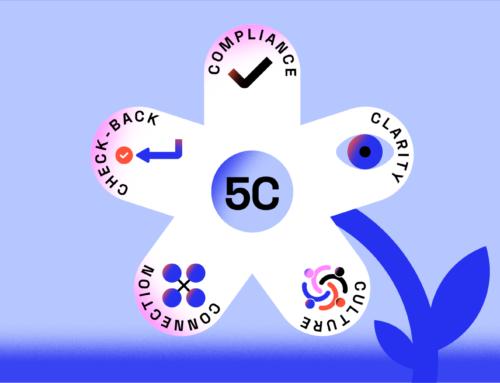Last Updated on November 5, 2021 – 8:04 am
While orientation programs are a popular component of effective onboarding, a list of tasks and responsibilities is not enough to give employees a robust understanding of a specific role within the company. When Texas Instruments compared new hires who went through the onboarding process to those who did not, it was discovered that those who spent time understanding their roles were fully productive two months earlier. The study also found that employees were two-thirds more likely to stay with the company for at least three years longer. Yet, Allied Workforce Mobility Survey found that only 58% of companies provide clear job titles and identify employees’ expectations. Furthermore, only 39% establish milestones and set goals for new employees.
Let’s have a look at how we can improve clarification in onboarding.
Clarify Expectations
Role clarity (how well a new employee understands her/his role and expectations) is among the most consistent predictors of job satisfaction and organizational commitment. If new employees say they understand the roles they occupy, that indicates higher role clarity. While developing the Journey app, our product team surveyed more than 800 professionals and asked them where they struggle most regarding clarification during onboarding. Here are the most common answers:
– “Hard time figuring out what is exactly expected from me for the first three months of the job.”
– “Expectations from me were vague,”
– “Not knowing who is in charge of what,”
– “Hard to understand the big picture, i.e., how the company generates revenue.” (note: professionals who have moved into different business industries doing the same job often mentioned that they need more clarification on how the industry works).
When asked about positive experiences, the new hires who had an excellent onboarding said:
– “were given very clear instructions”,
– “received much help from their co-workers.”
– “My manager went over our short-term and long-term goals.”
Clarify Business-Critical Knowledge
Clarification is expanding a new employee’s understanding of their job responsibilities and organization role, basic knowledge of the job. This step aims to clarify expectations and responsibilities both for the new hire and his/her manager and team members. Managers affected by the curse of knowledge had a harder time explaining the basics to people who are new to the subject because they can’t remember what questions they had when they were new to the topic. That’s why managers need guidance during a new hire onboarding. Companies can automate this process in a tailor-made fashion. Journey App reminds managers to clarify the most business-critical knowledge that the manager expects the new hire to learn within the first 90 days. The app also ensures that the manager supports the new employee with mentors, on-the-job assignments, or content. Later, the app also sends action items and follows up on the process (see below).
According to renowned onboarding researcher Talya N. Bauer, leveraging technology is one thing organizations can do to enhance clarification and confidence for new employees. Bauer explains that leveraging technology is crucial since it “makes it easy for new employees to access information.” Companies can digitize the whole clarification process by using onboarding or workflow automation apps.
Clarify Business-Critical Skills
Sometimes, the required skills listed in a job description and the skill expectations of managers may differ. Even two managers for the same role may have different expectations. When managers clarify the business-critical skills (both power skills such as resourcefulness or job-specific skills such as project management), new hire knows what to focus on and improve.
Successful onboarding can only be possible through several functions working together in a coordinated fashion. According to Talya N. Bauer, there are levels of onboarding strategy your organization can achieve: Passive, High potential, and Proactive. For example, “when compliance and clarification are well covered by a firm’s formal onboarding practices and some culture and connection mechanisms are in place, Level 2- High Potential Onboarding- has been reached.” But unless you are organizing your onboarding process systematically with a human resource management approach, you won’t be able to reach level 3 and maximize your onboarding success. To better understand your organization’s onboarding level, you can try an inventory like the Onboarding Track Record. In the late 1990s and early 2000s, IBM executives recognized that the firm had some success with new employees, but it was stuck at Level 2—High Potential Onboarding. With increased hiring, the new hire population became crucial. Realizing that new hires have different needs than longer-tenured employees, IBM created the Assimilation Process, which consists of three steps: affirming, beginning, and connecting. Beginning occurs during the employee’s first 30 days. On the first day, strict rules are in place to ensure that the new worker is met in person, introduced to the team, has a functional area to work, completes paperwork, and is presented an intranet onboarding platform, known as “Your IBM.” During this crucial first month, managers make sure that any needed resources are available, clarify roles and responsibilities, encourage the newcomer, and schedule “check-in” times to ensure that the new employee is making progress with “Your IBM.”
A study by IDC found that employees cost businesses $37 billion every year due to employees not understanding their jobs. Clarifying the business-critical knowledge, roles, and responsibilities will help new hires adapt, be happy and productive faster.
If you want to learn more about making your onboarding process more efficient, you can check out our blog posts here.






Leave A Comment